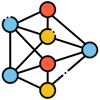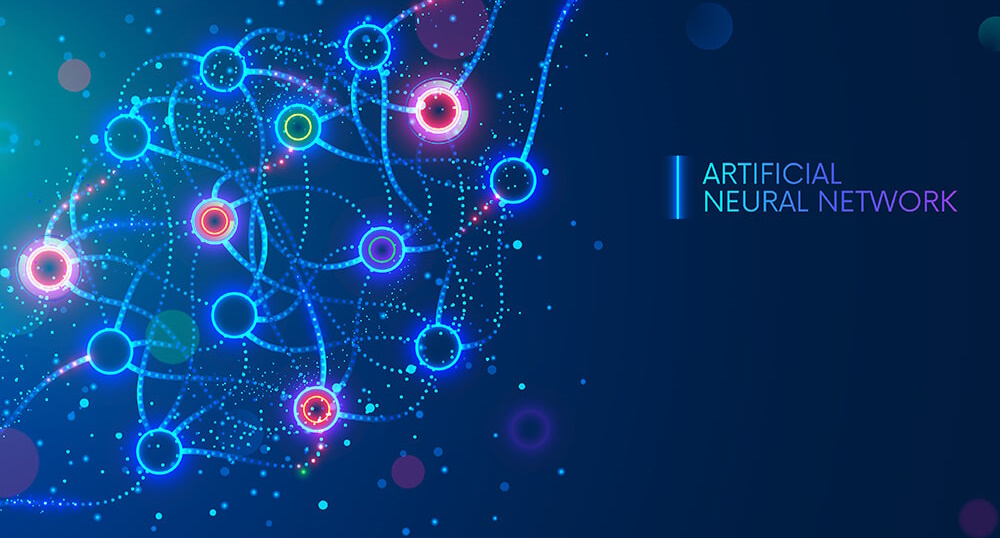 Neural Networks
Neural Networks
Artificial Neural Networks (ANNs) are a key technology in artificial intelligence (AI) and machine learning (ML) that mimic the way the human brain processes information
They consist of interconnected nodes, or "neurons," organized in layers, and are designed to recognize patterns, classify data, and make predictions based on input data. They represent a powerful approach to solving complex problems in AI by mimicking biological processes in the human brain. Their versatility and effectiveness have made them indispensable tools across various domains, driving advancements in technology and research. As AI continues to evolve, neural networks will likely play an even more significant role in shaping future innovations.

Structure of Neural Networks
Layers
- Input Layer: This layer receives the initial data for processing. Each node in this layer represents a feature or variable of the input data.
- Hidden Layers: These layers perform computations and transformations on the input data. A neural network can have one or more hidden layers, and each layer can have multiple neurons.
- Output Layer: The final layer produces the output of the network, such as classifications or predictions.
Neurons
Each neuron in a network processes inputs by applying a weighted sum followed by an activation function. The activation function determines whether the neuron should be activated based on its input.
Weights and Biases
Connections between neurons have associated weights that adjust during training, influencing the strength of the signal passed between neurons. Biases are additional parameters that help shift the activation function.
Learning Process
- Training: Neural networks learn from data through a process called training, where they adjust weights and biases based on the error of their predictions compared to actual outcomes. This is typically done using algorithms like backpropagation and optimization techniques such as gradient descent.
- Activation Functions: Common activation functions include sigmoid, ReLU (Rectified Linear Unit), and tanh, which introduce non-linearity into the model, enabling it to learn complex relationships.
Applications of Neural Networks
Neural networks are widely used across various fields due to their ability to handle complex data. Some notable applications include:
- Image Recognition: Used in facial recognition systems and medical imaging analysis.
- Natural Language Processing (NLP): Powers chatbots, language translation services, and sentiment analysis.
- Speech Recognition: Converts spoken language into text for applications like virtual assistants.
- Predictive Analytics: Used in finance for stock price prediction and risk assessment.
| What did the AI say after a long day of coding? |
 |
| "I'm exhausted, my neural network is fried!" |
Types of Neural Networks
- Feedforward Neural Networks: The simplest type where connections between nodes do not form cycles; data moves in one direction from input to output.
- Convolutional Neural Networks (CNNs): Specialized for processing grid-like topology data such as images; they use convolutional layers to automatically detect features.
- Recurrent Neural Networks (RNNs): Designed for sequential data processing; they maintain memory of previous inputs through loops in their architecture.
- Generative Adversarial Networks (GANs): Comprise two networks (generator and discriminator) that compete against each other to create new, synthetic instances of data.
 Links
Links
online.nyit.edu/blog/neural-networks-101-understanding-the-basics-of-key-ai-technology
elastic.co/what-is/neural-network
spiceworks.com/tech/artificial-intelligence/articles/what-is-a-neural-network/
techtarget.com/searchenterpriseai/definition/neural-network
ibm.com/topics/neural-networks
aws.amazon.com/what-is/neural-network/
cloudflare.com/learning/ai/what-is-neural-network/
en.wikipedia.org/wiki/Neural_net
sciencedirect.com/topics/earth-and-planetary-sciences/artificial-neural-network
nobelprize.org/prizes/physics/2024/press-release/